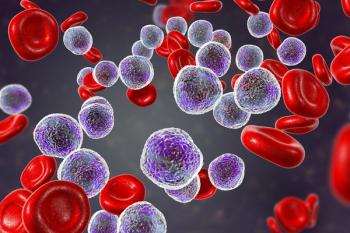
AE Measures Offer Insights for Endocrine Therapy Discontinuation in DCIS
Assessing adverse effects with a toxicity index and patient-reported outcomes at baseline and treatment-emergent toxicities revealed insights into why postmenopausal patients with ductal carcinoma in situ discontinued endocrine therapy.
An analysis of the adverse effect (AE) profiles of postmenopausal patients with ductal carcinoma in situ using the toxicity index revealed insights into the reasons for discontinuation of endocrine therapy, which were further enhanced by patient-reported outcomes (PROs) measured at baseline and treatment-emergent toxicities, according to results from a study published in the Journal of Clinical Oncology.
When investigators examined baseline PROs and AEs that occurred during treatment, they reported that thrombosis and arthralgia were the AEs most commonly associated with discontinuation of treatment with tamoxifen and anastrozole. Other factors such as baseline pain interference, hot flashes, and unhappiness were associated with discontinuation of tamoxifen (overall Harrell's C-statistic, 0.686; 95% CI, 0.640-0.732), although no baseline factors were associated with anastrozole discontinuation (overall Harrell's C-statistic, 0.656, 95% CI, 0.630-0.681). Baseline PROs associated with a shorter time to discontinuation included pain interference, hot flashes, and unhappiness in the tamoxifen arm and hot flashes in the anastrozole arm.
“This analysis of clinician-reported AEs using the Toxicity Index method yielded important insights into reasons for endocrine therapy discontinuation in patients without prior chemotherapy treatment,” the investigators wrote. “Patient-reported symptoms measured before and during treatment further enhanced this understanding.”
Available toxicity data were drawn from the phase 3 NSABP B-35 clinical trial (NCT00053898). In the study, patients were randomly assigned 1:1 to receive either tamoxifen at 20 mg orally once daily plus an identical placebo or anastrozole at 1 mg orally once daily plus an identical placebo for tamoxifen. Patients were stratified by age (younger than 60 years vs 60 years or older).
The primary end point was time to treatment discontinuation, which was defined as the date of first treatment to the date treatment was discontinued.
A total of 3046 patients were available for analysis, of whom half were assigned to tamoxifen (n = 1523) and the other to anastrozole (n = 1523). A total of 28.5% of patients prematurely discontinued treatment. Specifically, 28.2% receiving tamoxifen and 28.9% receiving anastrozole discontinued treatment. Focusing on the time-dependent covariate, toxicity was associated with discontinuations for both tamoxifen (HR, 1.77; 95% CI, 1.65-1.90) and anastrozole (HR, 1.71; 95% CI, 1.60-1.83). Median age was 60 years (range, 55-66) and 84.9% of the population was non-Hispanic White.
A multivariable analysis found that higher Toxicity Index values for blood or bone marrow, general cardiovascular, constitutional symptoms, hepatic, neurology, and pain domains were all significantly associated with shorter time to discontinuation for patients receiving tamoxifen (Harrell’s C-statistic, 0.675; 95% CI, 0.656-0.693). For patients who received anastrozole, increased toxicity index value of general cardiovascular, constitutional, dermatology, neurology, and pain domains were significantly associated with a shorter time to discontinuation (Harrell’s C-statistic, 0.671; 95% CI, 0.652-0.690).
AEs associated with treatment discontinuations in both treatment groups included fatigue, arthralgia, myalgia, sensory neuropathy, and cardiac ischemia. For patients treated with tamoxifen, additional symptoms associated with time to discontinuations included thrombosis, nausea, transaminitis, dizziness, chest pain, and headache. For anastrozole, those AEs included anorexia, cerebrovascular ischemia, pruritus, and bone pain.
A total of 1185 patients had baseline PRO data, including 596 patients in the tamoxifen arm and 589 in the anastrozole arm. In the tamoxifen arm, worse physical health, depression scores at baseline, and multiple AEs were significantly associated with a shorter time to treatment discontinuation.
“This approach to assessment of treatment tolerability should be considered both when analyzing and interpreting data from previously conducted randomized controlled trials and when designing prospective studies examining new treatment interventions for patients with cancer,” the investigators concluded.
Reference
Henry NL, Kim S, Hays RD, et al. Toxicity Index, Patient-reported outcomes, and early discontinuation of endocrine therapy for breast cancer risk reduction in NRG Oncology/NSABP B-35. J Clin Oncol. 2021;39(34):3800-3812. doi:10.1200/JCO.21.00910
Newsletter
Stay up to date on recent advances in the multidisciplinary approach to cancer.


















































































